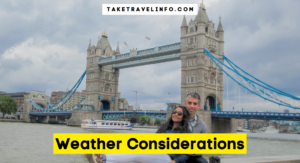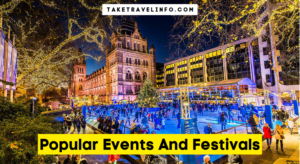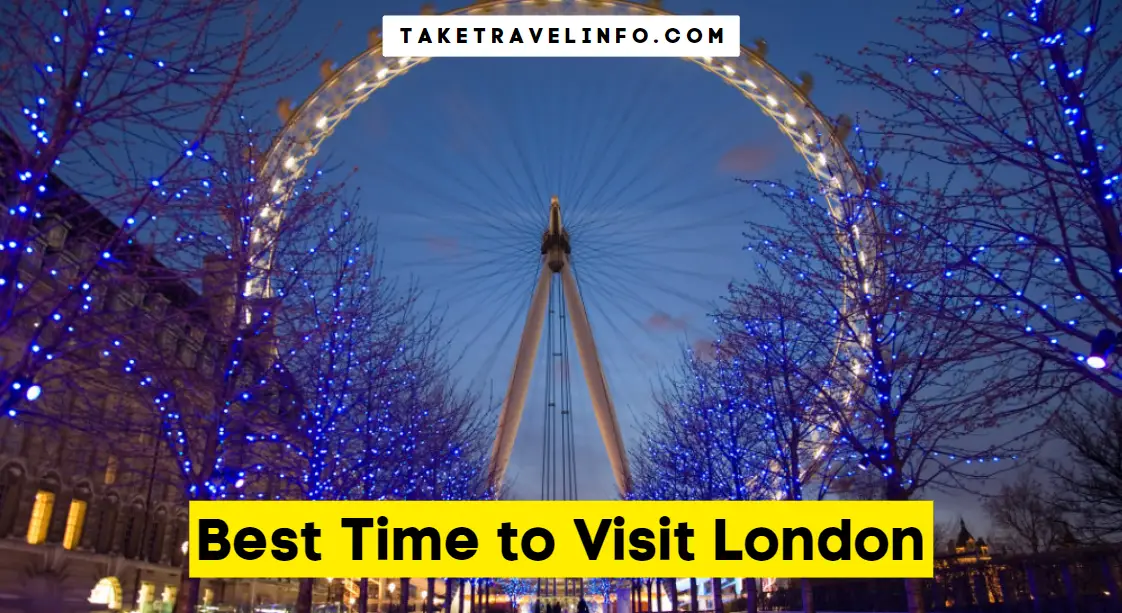The best time to visit London is during the summer months, from June to September when the weather is warmest and there are plenty of outdoor events and festivals to enjoy. London is a vibrant and diverse city with a rich history and cultural scene.
From iconic landmarks such as the Tower of London and Buckingham Palace to world-class museums like the British Museum and Tate Modern, there is no shortage of things to see and do. Whether you’re interested in history, art, theater, or shopping, London has something for everyone.
The city is also known for its bustling markets, delicious food, and famous parks like Hyde Park and Kensington Gardens. So whether you’re planning a short city break or a longer vacation, London is a must-visit destination any time of year.
Weather Considerations
For the best time to visit London, consider the weather. From sunny springs to mild summers and colorful autumns, London offers a pleasant experience throughout the year. Plan your trip accordingly to make the most of the city’s beautiful seasons.

London, known for its unpredictable weather, is a city that experiences seasonal variations throughout the year. Whether you’re planning a trip to see iconic landmarks like Big Ben or explore the vibrant neighborhoods, understanding the weather patterns in London can help you make the most of your visit.
Let’s delve into the weather considerations for different seasons, average temperatures, and rainfall and precipitation in the capital city of the United Kingdom.
Seasonal Variations
Spring (March to May):
- Mild temperatures range from 9°C (48°F) to 15°C (59°F).
- Occasional rainfall, so it’s recommended to carry an umbrella.
- Blooming flowers and green parks make it a scenic time to visit.
Summer (June to August):
- Relatively warm weather with temperatures averaging between 15°C (59°F) and 25°C (77°F).
- Longer daylight hours, provide more time for exploration.
- Popular time for festivals and events, attracting both tourists and locals.
Autumn (September to November):
- Mild temperatures range from 11°C (52°F) to 19°C (66°F).
- Changing the colors of leaves in parks creates a picturesque setting.
- Rainfall becomes more frequent, so packing a light raincoat is advisable.
Winter (December to February):
- Cold temperatures average between 2°C (36°F) and 8°C (46°F).
- Shorter daylight hours, make it essential to plan activities accordingly.
- Festive atmosphere with Christmas decorations and bustling markets.
Average Temperatures
London experiences a temperate maritime climate, which means mild summers and cool winters. Here are the average temperatures you can expect:
- Spring: 9°C (48°F) to 15°C (59°F)
- Summer: 15°C (59°F) to 25°C (77°F)
- Autumn: 11°C (52°F) to 19°C (66°F)
- Winter: 2°C (36°F) to 8°C (46°F)
Rainfall And Precipitation
London is not known for heavy rainfall, but it’s always useful to be prepared for occasional showers:
- Average annual rainfall: 600-700mm (23-28 inches)
- Rainfall is relatively evenly distributed throughout the year.
- Showers are often light and short-lived, so carrying a compact umbrella can come in handy.
London’s weather can be described as mild and changeable. To make the most of your visit, it’s advisable to pack layers and plan for potential rain showers. Whether you prefer the vibrant energy of summertime or the cozy charm of winter festivities, choosing the best time to visit London depends on your personal preferences and the experiences you wish to have in this captivating city.
Popular Events And Festivals
London is rich with popular events and festivals throughout the year, making it a great destination no matter when you visit. From the vibrant Notting Hill Carnival to the breathtaking fireworks display on New Year’s Eve, there is always something exciting happening in London.

Don’t miss out on experiencing the city’s cultural celebrations and lively atmosphere. Here are some of the most popular events and festivals in London:
Major Cultural Events
- Notting Hill Carnival: Held annually in August, the Notting Hill Carnival is one of the largest street festivals in Europe. It celebrates the Caribbean culture with colorful parades, music, dance, and delicious food.
- Thames Festival: The Thames Festival takes place in September and showcases the city’s rich maritime heritage. It features a vibrant river procession, live performances, art installations, fireworks, and a spectacular finale on the banks of the Thames.
- Chelsea Flower Show: This world-renowned event is held in May and attracts horticulture enthusiasts from around the globe. The Chelsea Flower Show displays breathtaking floral designs, and innovative garden concepts, and offers visitors the chance to explore beautiful show gardens.
Music And Art Festivals
- British Summer Time Hyde Park: This annual music festival takes place throughout the summer months, featuring a lineup of renowned music artists in the iconic Hyde Park setting. It offers a blend of concerts, food stalls, and fun activities for all ages.
- London Design Festival: Celebrating creativity and innovation, the London Design Festival is held in September. It showcases the best in design, including exhibitions, installations, talks, and workshops across various locations in the city.
- City of London Festival: The City of London Festival is a month-long celebration of arts, culture, and music in the heart of the city. From classical music performances to contemporary art installations, this festival offers a diverse range of cultural experiences.
Sporting Events
- Wimbledon Championships: For tennis enthusiasts, the Wimbledon Championships in July is a must-see event. Watch the world’s top players compete on the iconic grass courts and enjoy the festive atmosphere of this prestigious tournament.
- London Marathon: Held annually in April, the London Marathon is one of the world’s most famous long-distance races. Thousands of participants from around the globe run through the streets of London, supported by cheering crowds.
- Boat Race: The annual Boat Race between the rowing teams of Oxford and Cambridge Universities takes place on the River Thames in March or April. Join the tens of thousands of spectators along the riverbanks to witness this thrilling sporting tradition.
London truly comes alive during these events and festivals, offering visitors and locals alike unforgettable experiences. Whether you’re passionate about culture, music, art, or sports, a visit to London during these events will leave you with lasting memories.
Tourist Crowd Levels
Discover the best time to explore London with fewer crowds. Avoid the tourist rush and enjoy the city’s attractions by planning your visit during off-peak seasons.

Peak Season
- The peak season in London is during the summer, from June to August when the weather is generally warm and school holidays are in full swing. This is the time when the city experiences the highest number of tourists.
- The streets are bustling with people, and attractions like Buckingham Palace and the Tower of London are quite crowded. It’s important to plan your visit and expect longer queues.
- Prices for accommodation, flights, and attractions tend to be higher during the peak season, so it’s advisable to book in advance to secure better deals.
- Despite the crowds, you can enjoy various outdoor activities and events like open-air concerts, festivals, and garden tours.
Shoulder Season
- The shoulder season, which includes spring (March to May) and autumn (September to November), is considered a favorable time to visit London.
- During the shoulder season, the weather is mild and the city is less crowded compared to the peak season. This makes it easier to explore the popular attractions and enjoy a more relaxed experience.
- You can witness the blooming of cherry blossoms in spring and the beautiful autumn colors in parks like Hyde Park and Kensington Gardens during the shoulder season.
- It’s important to note that popular events and festivals like the Chelsea Flower Show and London Fashion Week also take place during the shoulder season, attracting a moderate number of tourists.
Off-Peak Season
- The off-peak season in London occurs during the winter months, from December to February. This is when the city experiences the lowest tourist crowd levels.
- The weather can be cold, with occasional rain and snow, but you can enjoy a unique and cozy experience in London. The city is beautifully decorated for the festive season, creating a magical atmosphere.
- During the off-peak season, you can visit popular attractions without long queues and have more space to explore. Museums and galleries, such as the British Museum and the National Gallery, offer a quieter experience.
- Additionally, you can take advantage of lower prices on accommodation and flights during this time. However, it’s a good idea to pack warm clothing and be prepared for shorter daylight hours.
London attracts tourists throughout the year, but the best time to visit depends on your preferences and tolerance for crowds. The peak season offers vibrant energy and a range of outdoor activities, while the shoulder and off-peak seasons provide a more relaxed and cost-effective experience.
Consider the different factors and plan your trip accordingly to make the most of your visit to the remarkable capital city of the United Kingdom.
Frequently Asked Questions For Best Time To Visit London
What Is The Cheapest Time Of Year To Visit London?
The cheapest time to visit London is during the winter months, specifically January and February.
What Is The Rainy Season In London England?
London’s rainy season typically occurs from October to February. Rainfall is moderate throughout the year, but peaks during these months.
How Many Days In London Is Enough?
You need at least 3-5 days to explore London fully.
Conclusion
London offers something for every traveler, no matter the time of year. Whether you are captivated by the historic beauty of the city or looking to immerse yourself in the vibrant atmosphere, London has it all.
Plan your trip wisely and you’ll surely have an unforgettable experience in this captivating city.

